Artist Daniel Arsham on loving cars, and eroding them
We speak to American artist Daniel Arsham about his deep-seated passion for supercars and the drive behind his exhibition of eroded automobiles in Detroit – including a Porsche930 Turbo and Ford Mustang GT
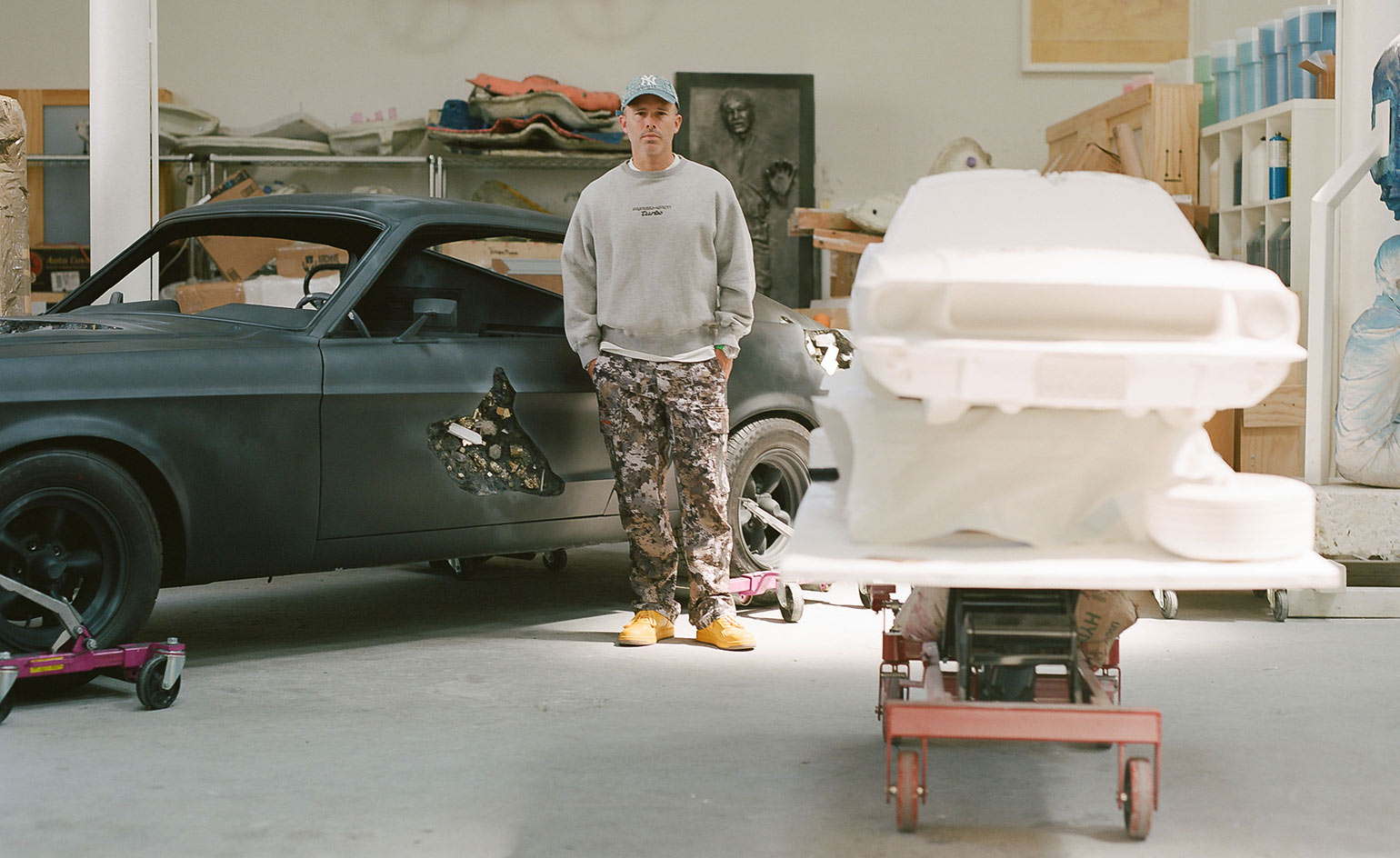
Daniel Arsham loves cars. He also likes eroding stuff. It’s this alluring (yet apocalyptic) combination that gives his latest show, ‘Turning Wrenches’ at Library Street Collective in Detroit, so much fuel.
Arsham has produced intensely detailed 1:3 scale replicas of supercars and other automotive artefacts as a tribute to the Detroit automotive industry and global car culture. There are also homages to the film industry, where the choice of a character’s vehicle is often an extension of their personality.
The miniature Mustang in the exhibition is a scale replica of the 1968 Ford Mustang GT that Steve McQueen drove during the gripping car chase in the film Bullitt. Elsewhere, a Ferrari references the 1986 comedy Ferris Bueller’s Day Off, and a bronze iteration of a DMC DeLorean (the famed time machine in 1985 sci-fi film Back to the Future) take things up a gear.
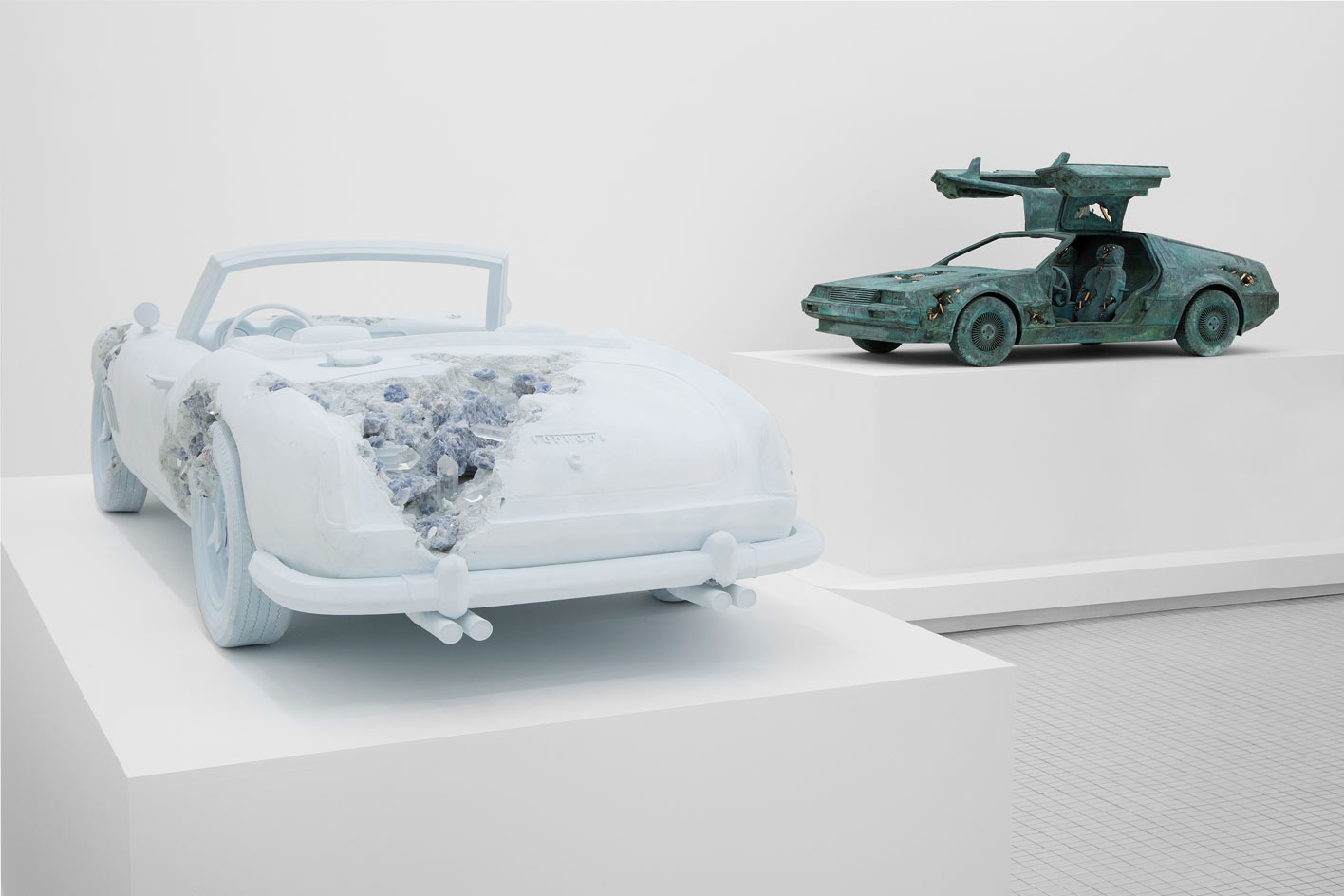
Installation view of Daniel Arsham, ’Turning Wrenches’, featuring sculptures of a Ferrari (left) and DMC DeLorean (right).
The Delorean also speaks to the role of time in Arsham’s work, which nods to a simultaneous past and future. When a car begins to erode, it’s usually an indication of a one-way trip to the scrap heap. And while industrial objects inevitably fall victim to time, Arsham’s approach to decay offers his cars new life, with strategically placed erosions erupting with dazzling masses of crystals.
This show, staged in Library Street Collective’s Snarkitecture-designed space, is an ode to the laborious and culturally rich automobile trade, appetising eye candy for petrolheads, and an exploration of how the fragility of man-made objects can collide with the tenacity of geological material.
Daniel Arsham on the drive behind his new turbo-charged show

Wallpaper*: What is so exciting about cars, and car culture, and when did this fascination begin?
Daniel Arsham: I’ve had a fascination with cars in general since I was a kid. Cars, to me, have always had an ability to create a sense of time travel. You can get into a perfectly restored car from the 1970s or 1990s, and there’s a very visceral sense of what it felt like to drive in those eras.
RELATED STORY
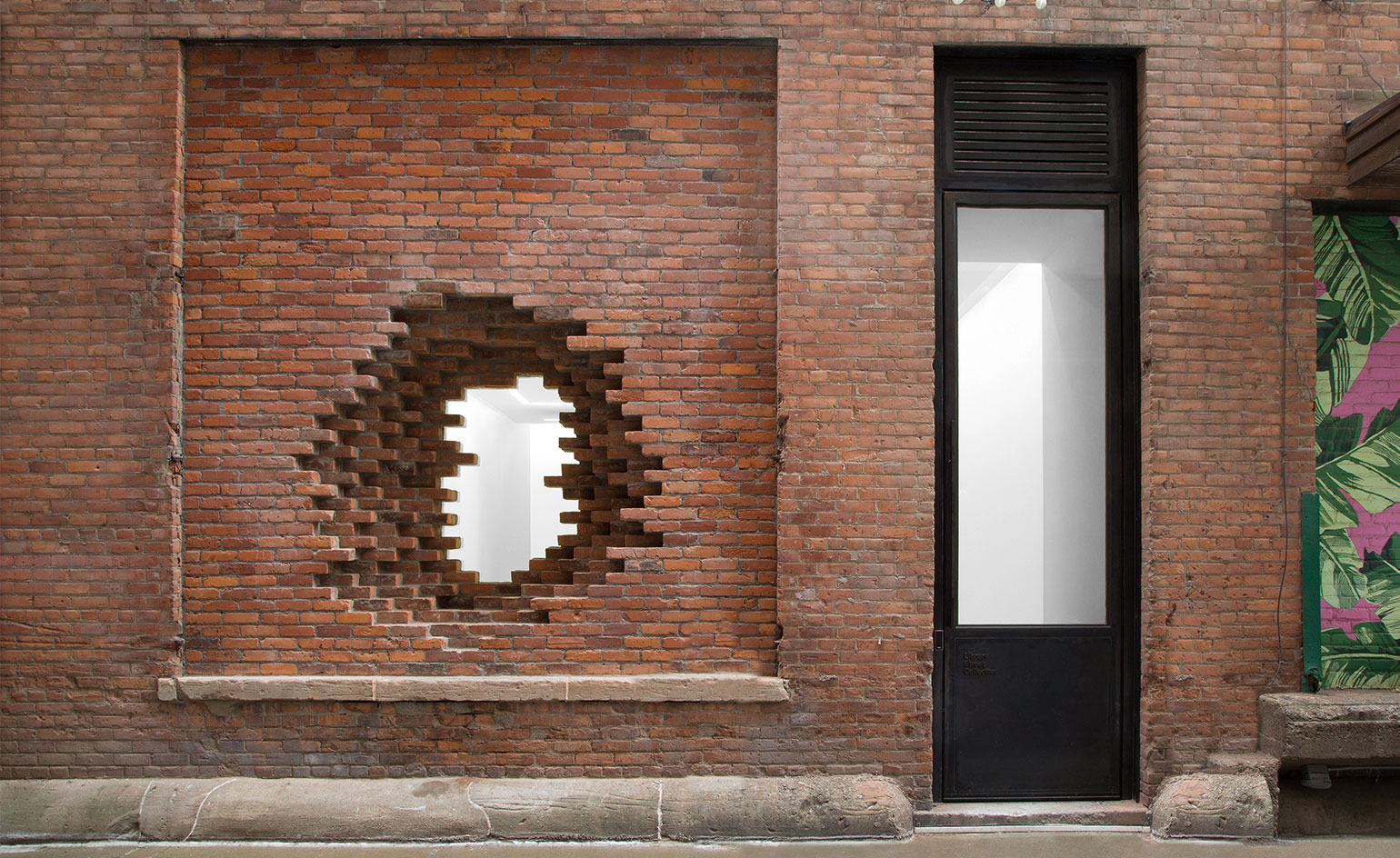
I was also drawn to Porschefrom an early age, which led to me eventually purchasing and restoring a 1986 Porsche 911 Turbo. A replica of the restored Porsche, re-interpreted as a 930A, is featured in the exhibition at Library Street Collective as a 1:3 scale replica.
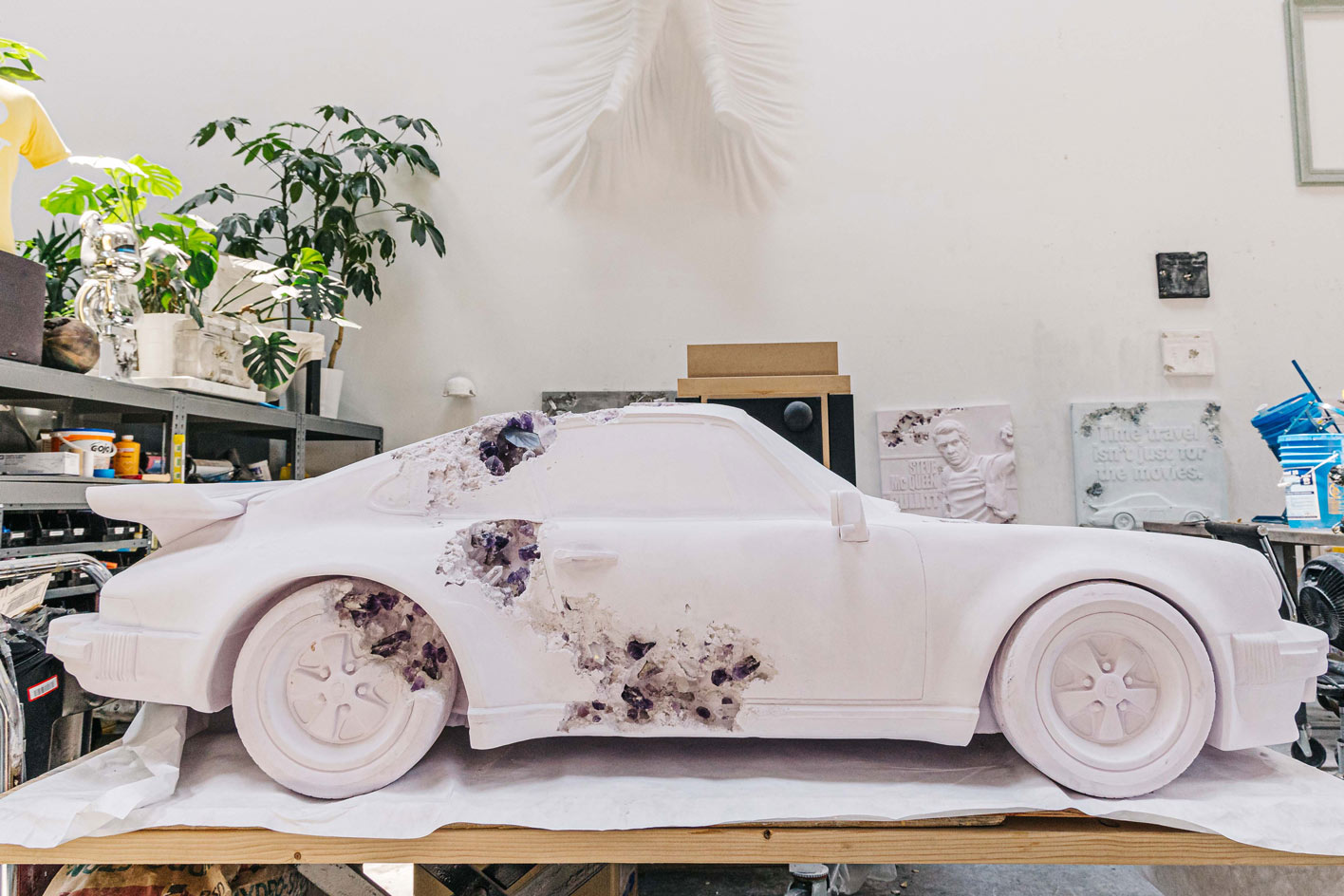
W*: How did you decide which car models to base these sculptures on?
DA: All of the sculptures on view at Library Street Collective are based on iconic car models. For example, the Ferrari is the car most famously used in Ferris Bueller’s Day Off, and the DMC DeLorean is famous in its own right for its use in Back to the Future. All of these cars are part of automobile history but also cinematic history.
The star of the show is the 1968 Ford Mustang GT from Steve McQueen’s movie Bullitt. I worked with the film’s prop master to create a one-to-one scaled model. The final eroded version consists of volcanic ash, pyrite crystal, and white quartz.
There is also the connection to the history of Detroit, which is inextricably linked to automotive design. John DeLorean was an American car executive who, after leaving General Motors, formed his own company, the DeLorean Motor Company. We also included the Ford Mustang, a Detroit icon introduced in 1964 that revolutionised American cars.
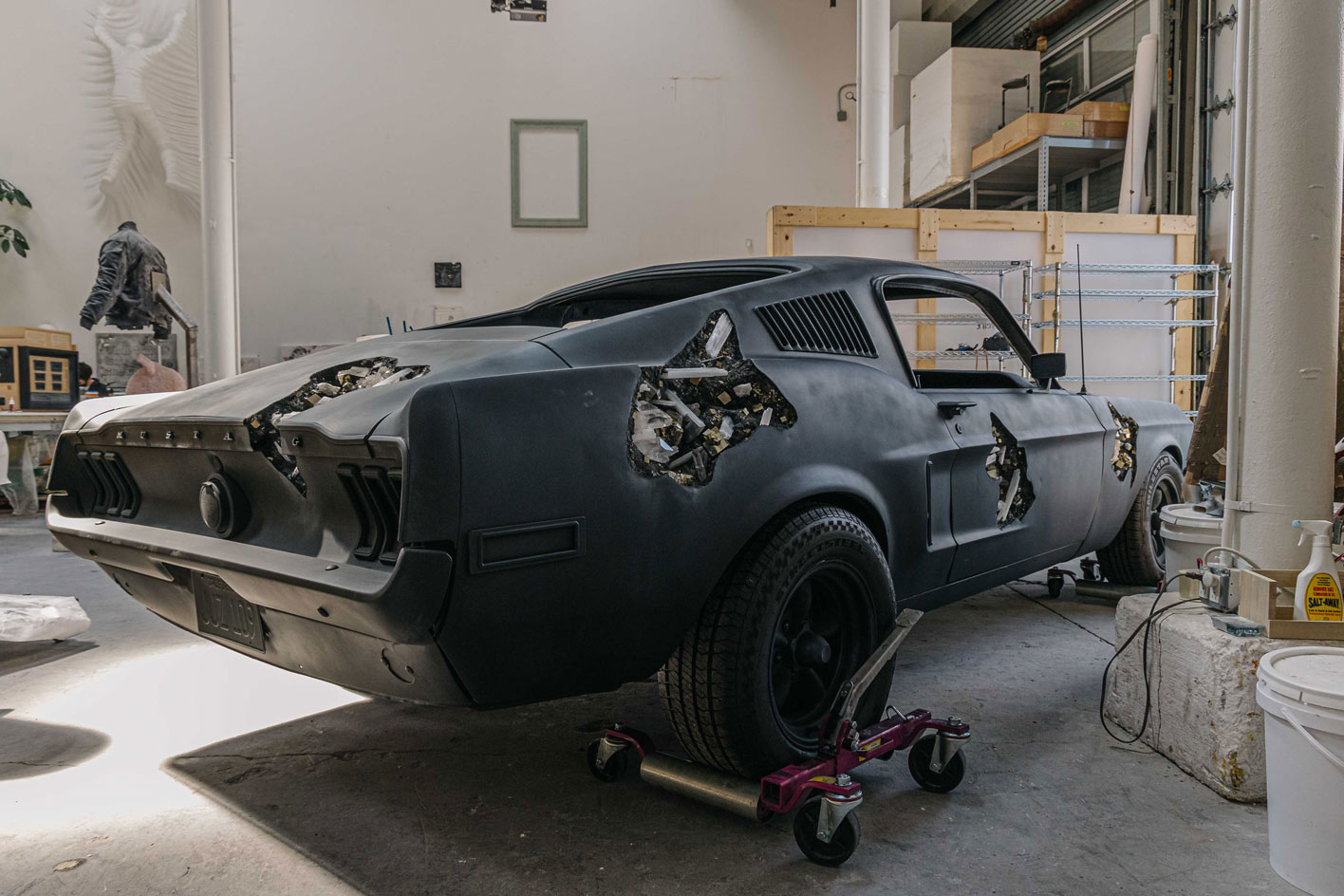
W*: What was the most challenging part of creating this new series?
DA: The most complex piece in the exhibition is the cast of the Ferrari. It’s composed of 35 pieces that all had to be cast individually and then assembled together. Any time you make an object that has an interior and exterior, it becomes much more complex.
W*: You're a passionate car collector. If you had to choose one car in your collection, which would it be and why?
DA: If I had to choose one car, it would be the 1973 Porsche Carrera 2.7 RS. It’s a legendary car and one I was able to acquire a year and a half ago. It’s truly a ‘supercar’ from that era – it had the largest engine at the time, and driving it is an incredible, visceral experience. It’s also not as insular as modern cars, so you sense every turn, every aspect of the engine, and the transfer of power from the engine to the road.
Receive our daily digest of inspiration, escapism and design stories from around the world direct to your inbox.
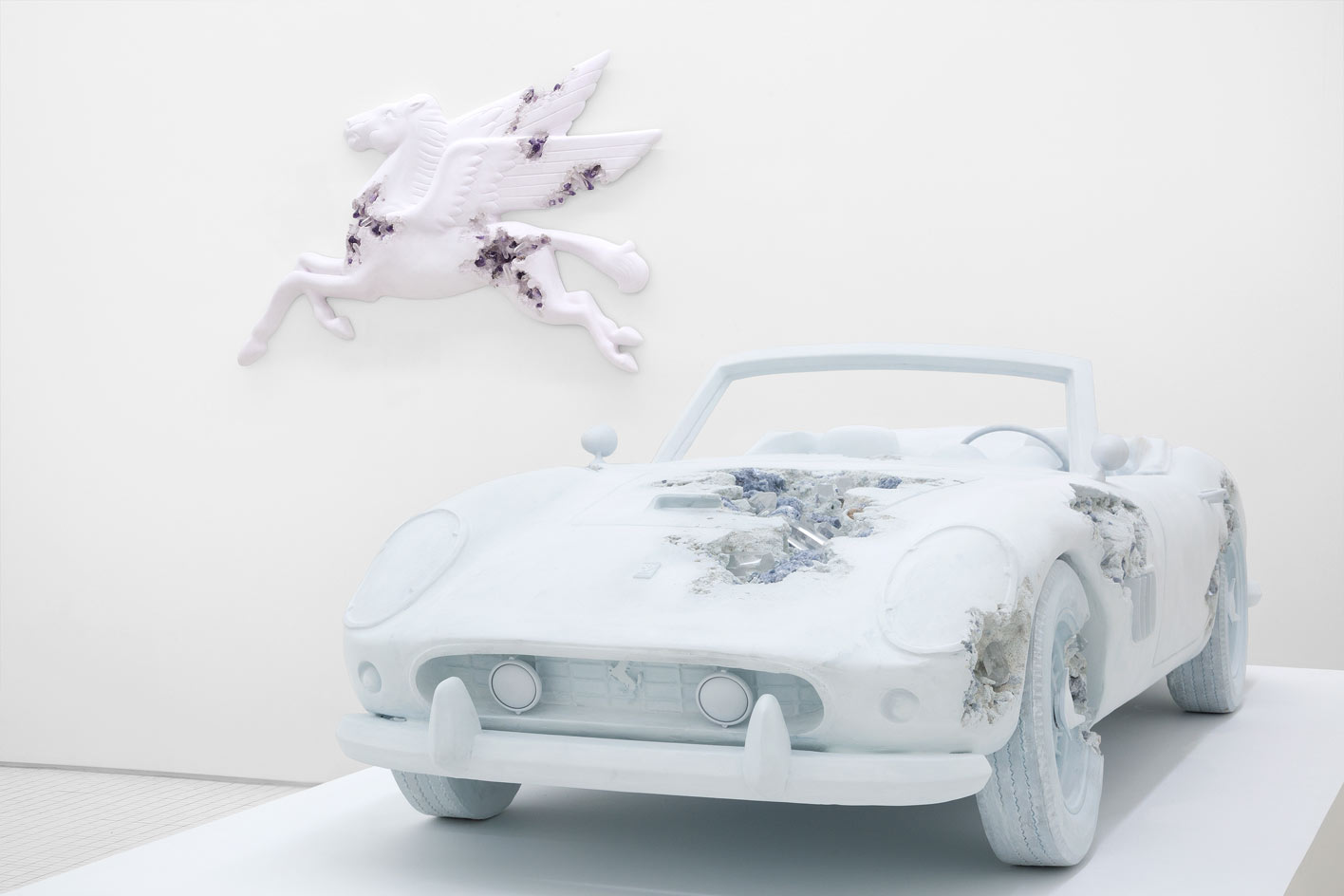
Installation view of Daniel Arsham, ‘Turning Wrenches’, until 7 August 2021.
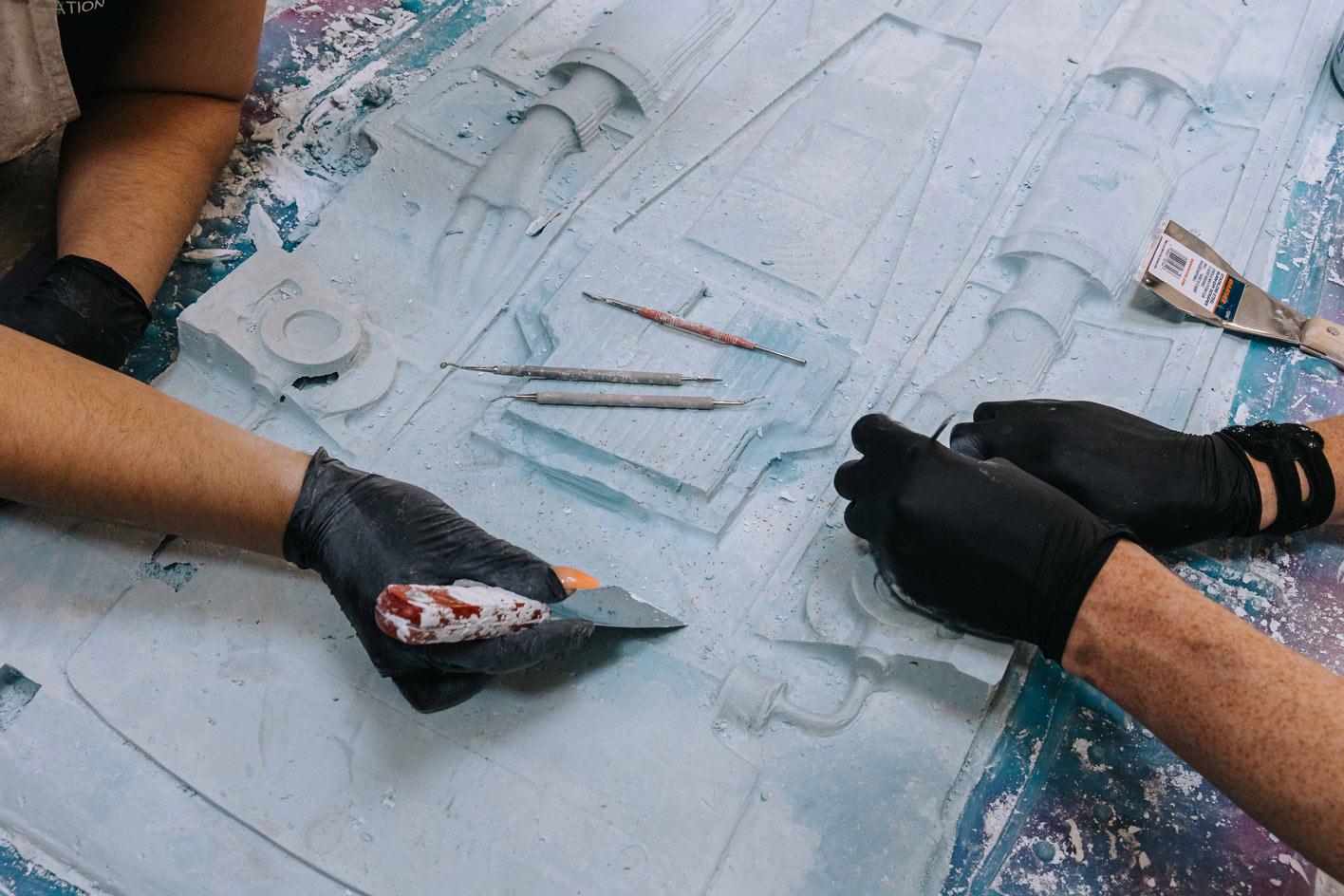
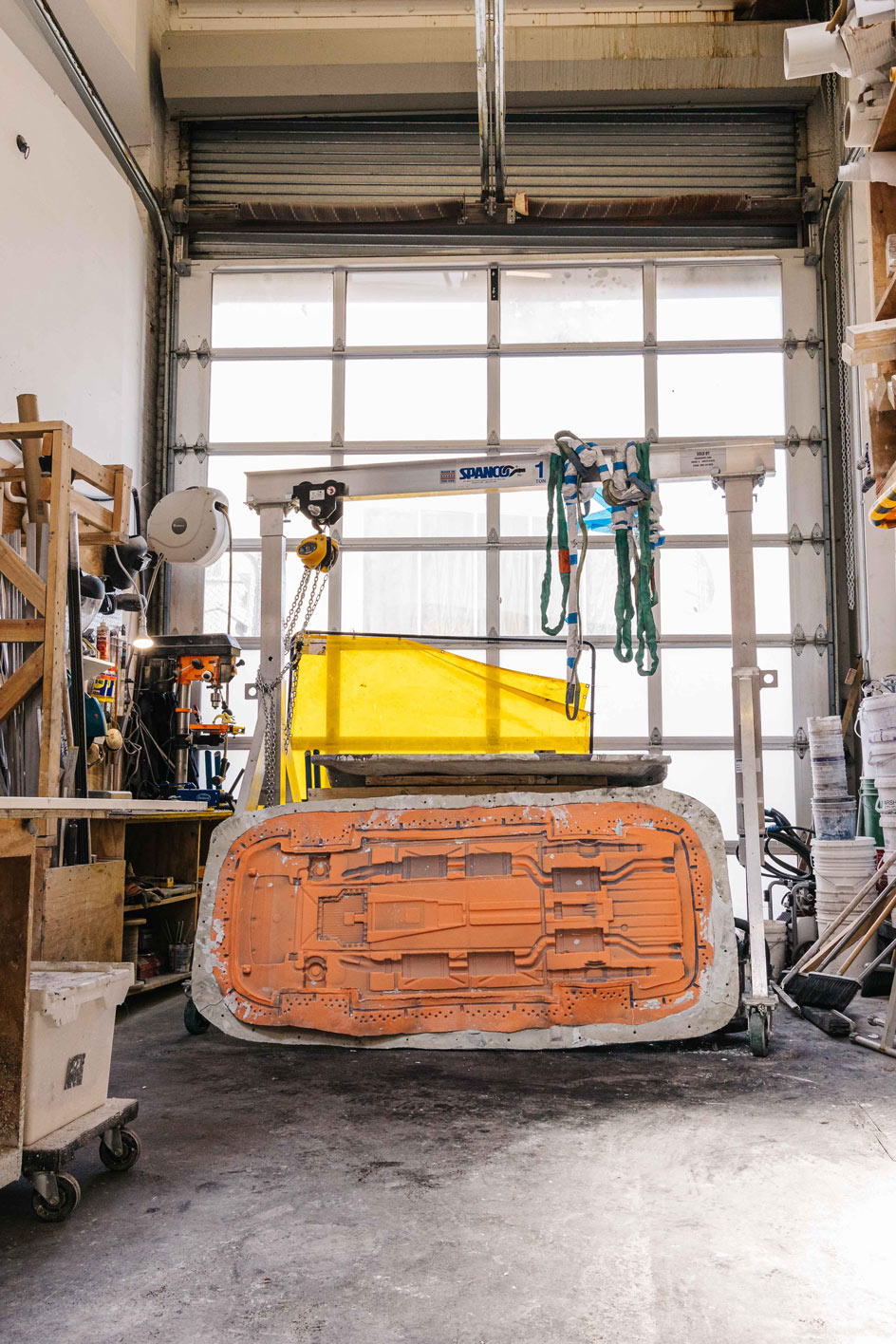
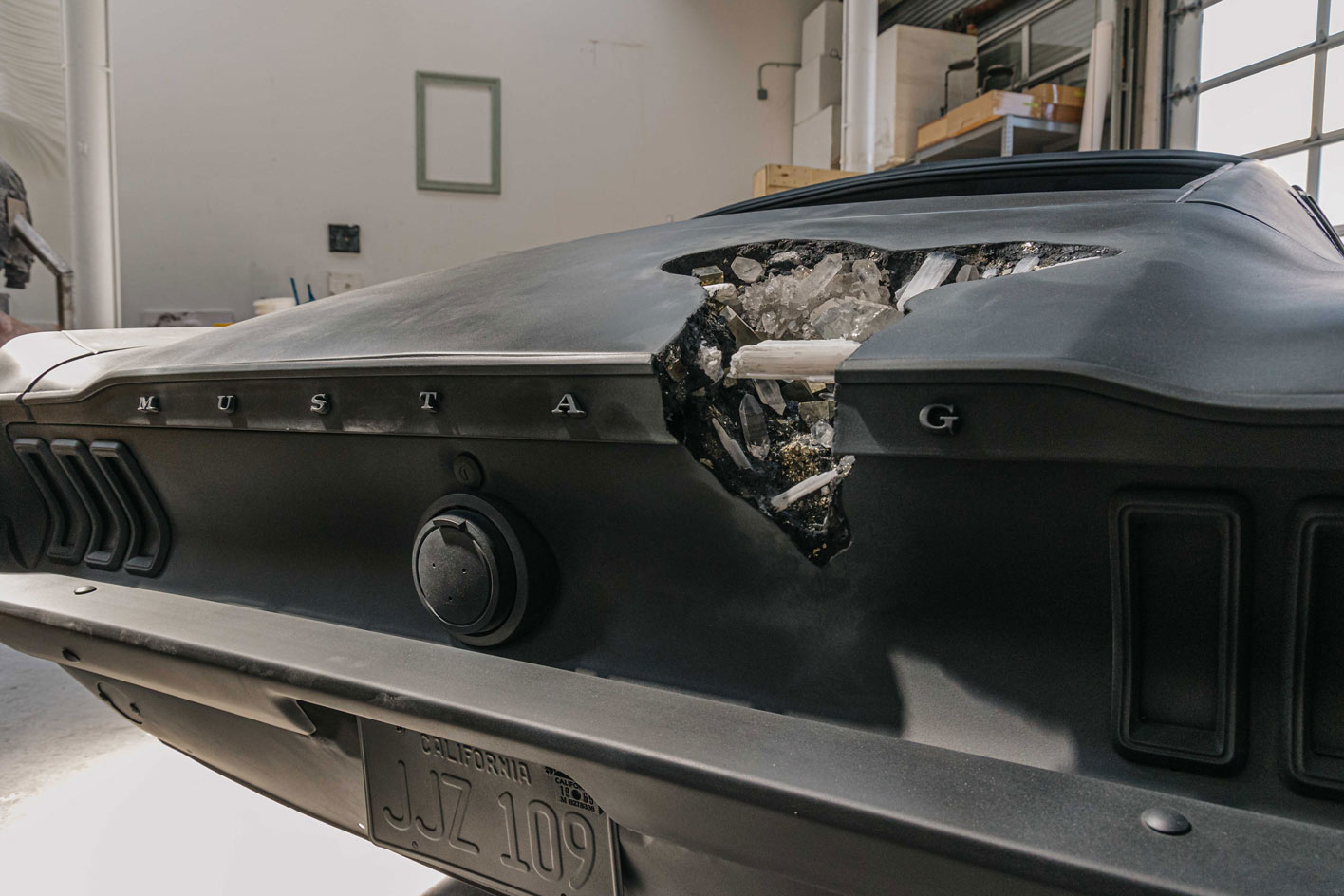
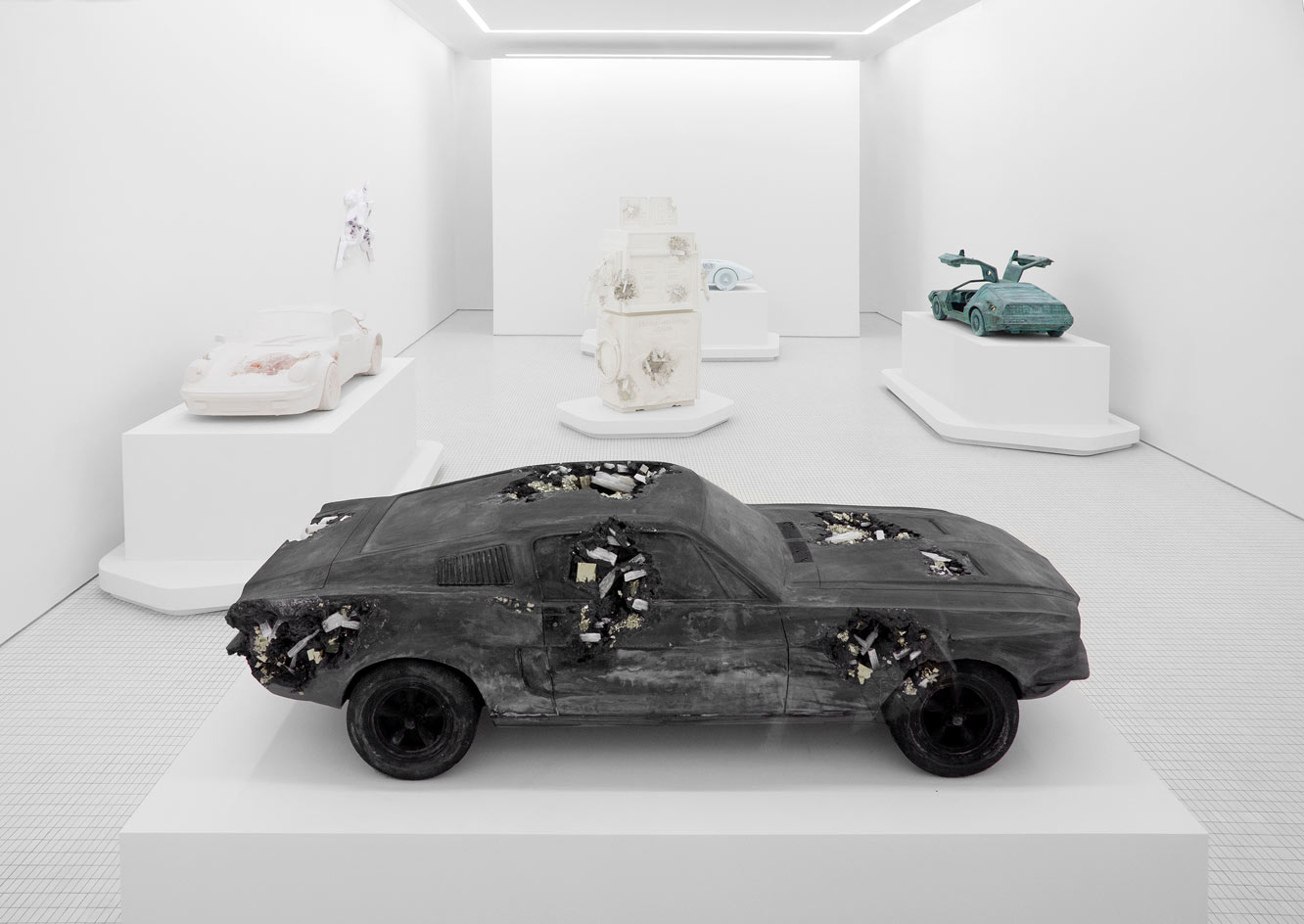
Installation view of Daniel Arsham, ‘Turning Wrenches’, until 7 August 2021.
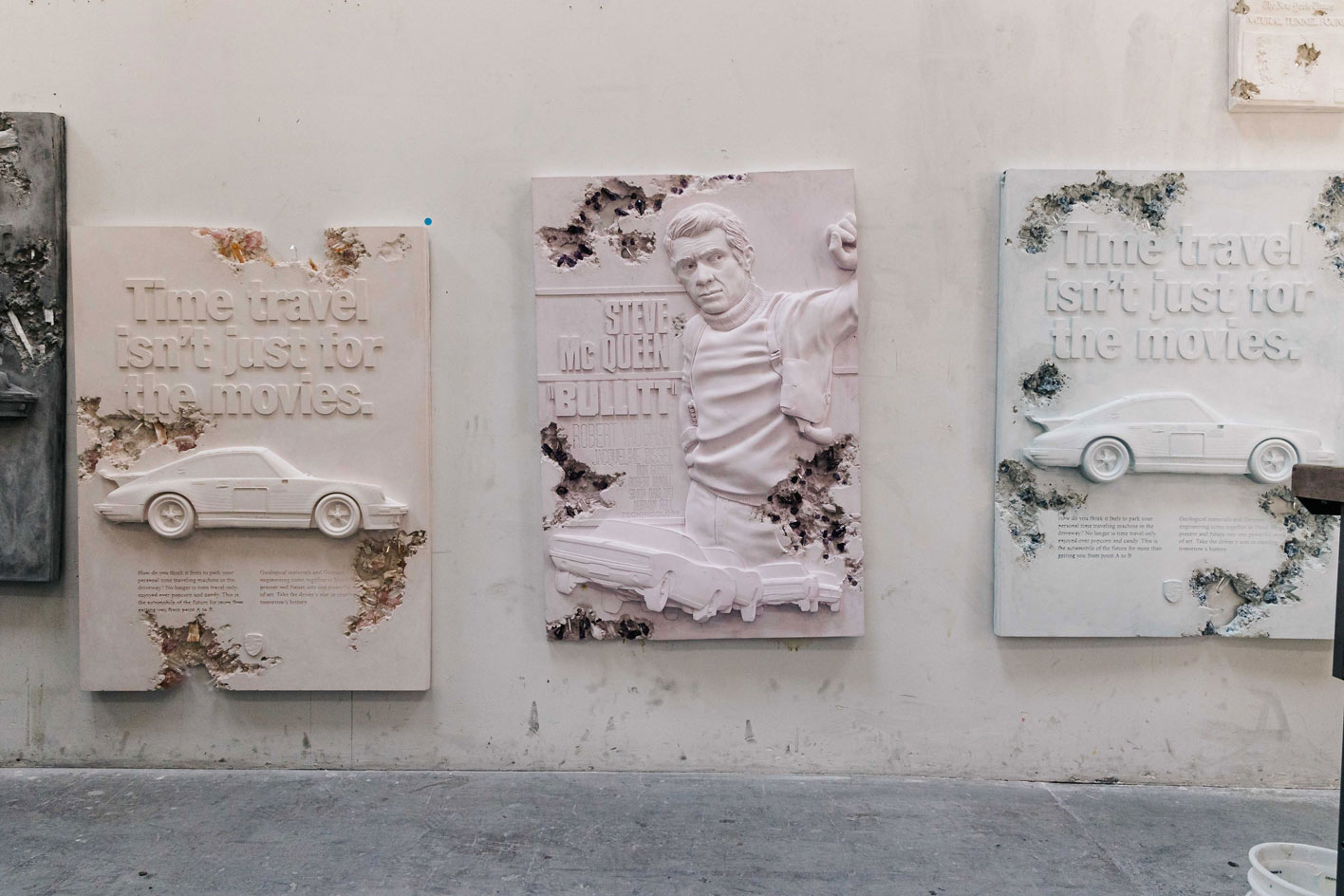
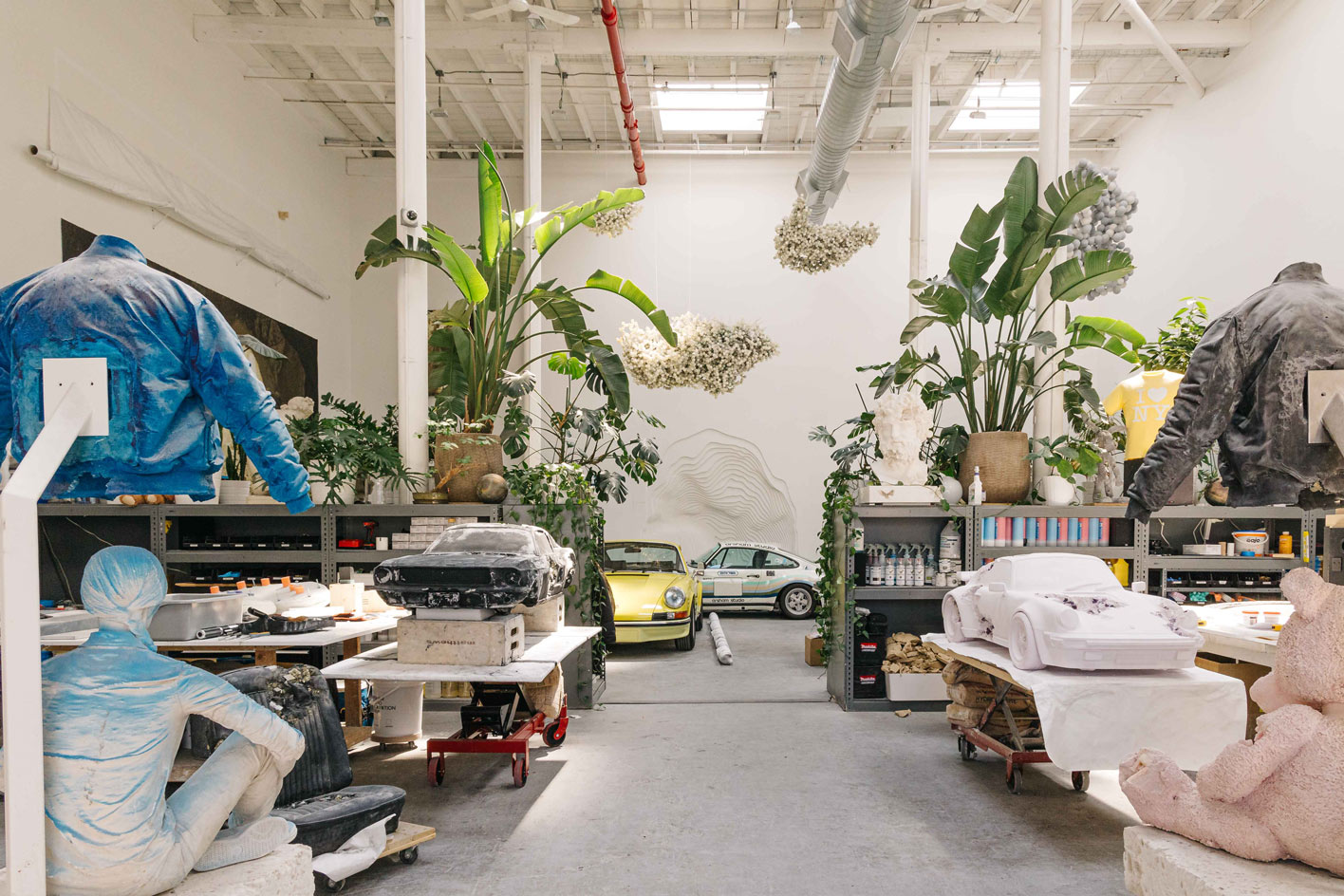
INFORMATION
Daniel Arsham: ‘Turning Wrenches’, until 7 August 2021, Library Street Collective, Detroit, lscgallery.com
danielarsham.com
ADDRESS
1274 Library St
Detroit, MI 48226
Harriet Lloyd-Smith was the Arts Editor of Wallpaper*, responsible for the art pages across digital and print, including profiles, exhibition reviews, and contemporary art collaborations. She started at Wallpaper* in 2017 and has written for leading contemporary art publications, auction houses and arts charities, and lectured on review writing and art journalism. When she’s not writing about art, she’s making her own.
-
 The Bombardier Global 8000 flies faster and higher to make the most of your time in the air
The Bombardier Global 8000 flies faster and higher to make the most of your time in the airA wellness machine with wings: Bombardier’s new Global 8000 isn’t quite a spa in the sky, but the Canadian manufacturer reckons its flagship business jet will give your health a boost
-
 A former fisherman’s cottage in Brittany is transformed by a new timber extension
A former fisherman’s cottage in Brittany is transformed by a new timber extensionParis-based architects A-platz have woven new elements into the stone fabric of this traditional Breton cottage
-
 New York's members-only boom shows no sign of stopping – and it's about to get even more niche
New York's members-only boom shows no sign of stopping – and it's about to get even more nicheFrom bathing clubs to listening bars, gatekeeping is back in a big way. Here's what's driving the wave of exclusivity
-
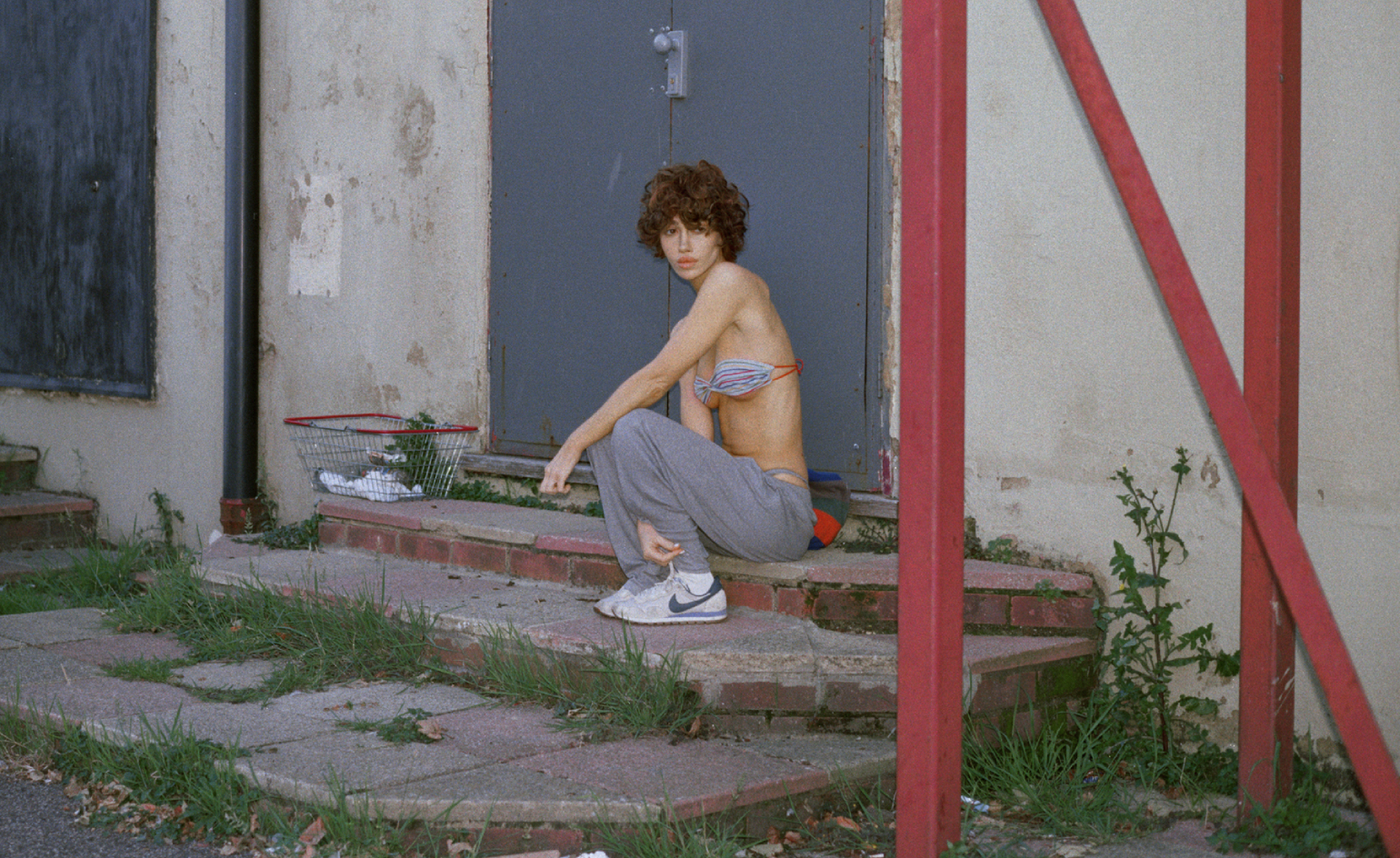 Nadia Lee Cohen distils a distant American memory into an unflinching new photo book
Nadia Lee Cohen distils a distant American memory into an unflinching new photo book‘Holy Ohio’ documents the British photographer and filmmaker’s personal journey as she reconnects with distant family and her earliest American memories
-
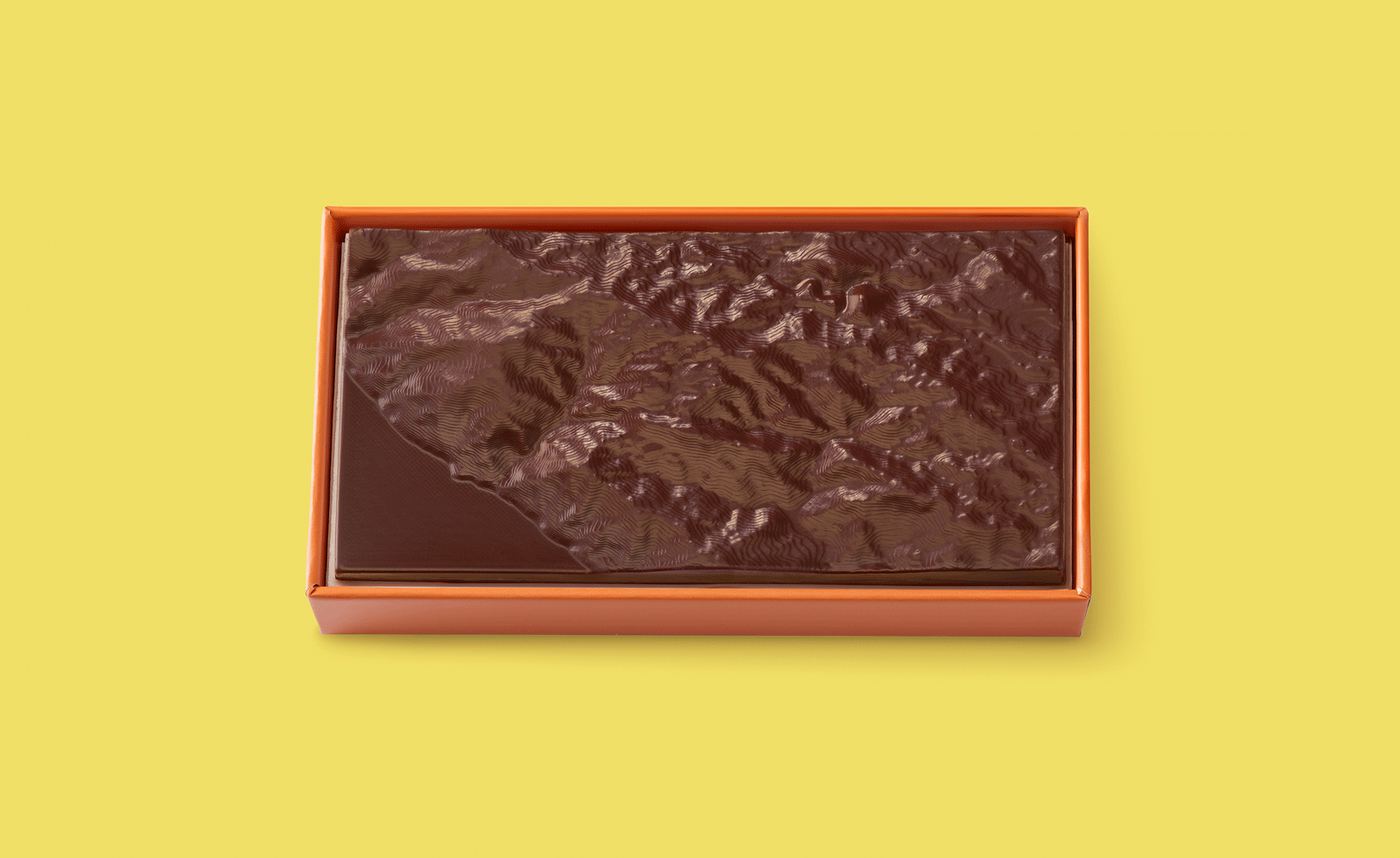 Ed Ruscha’s foray into chocolate is sweet, smart and very American
Ed Ruscha’s foray into chocolate is sweet, smart and very AmericanArt and chocolate combine deliciously in ‘Made in California’, a project from the artist with andSons Chocolatiers
-
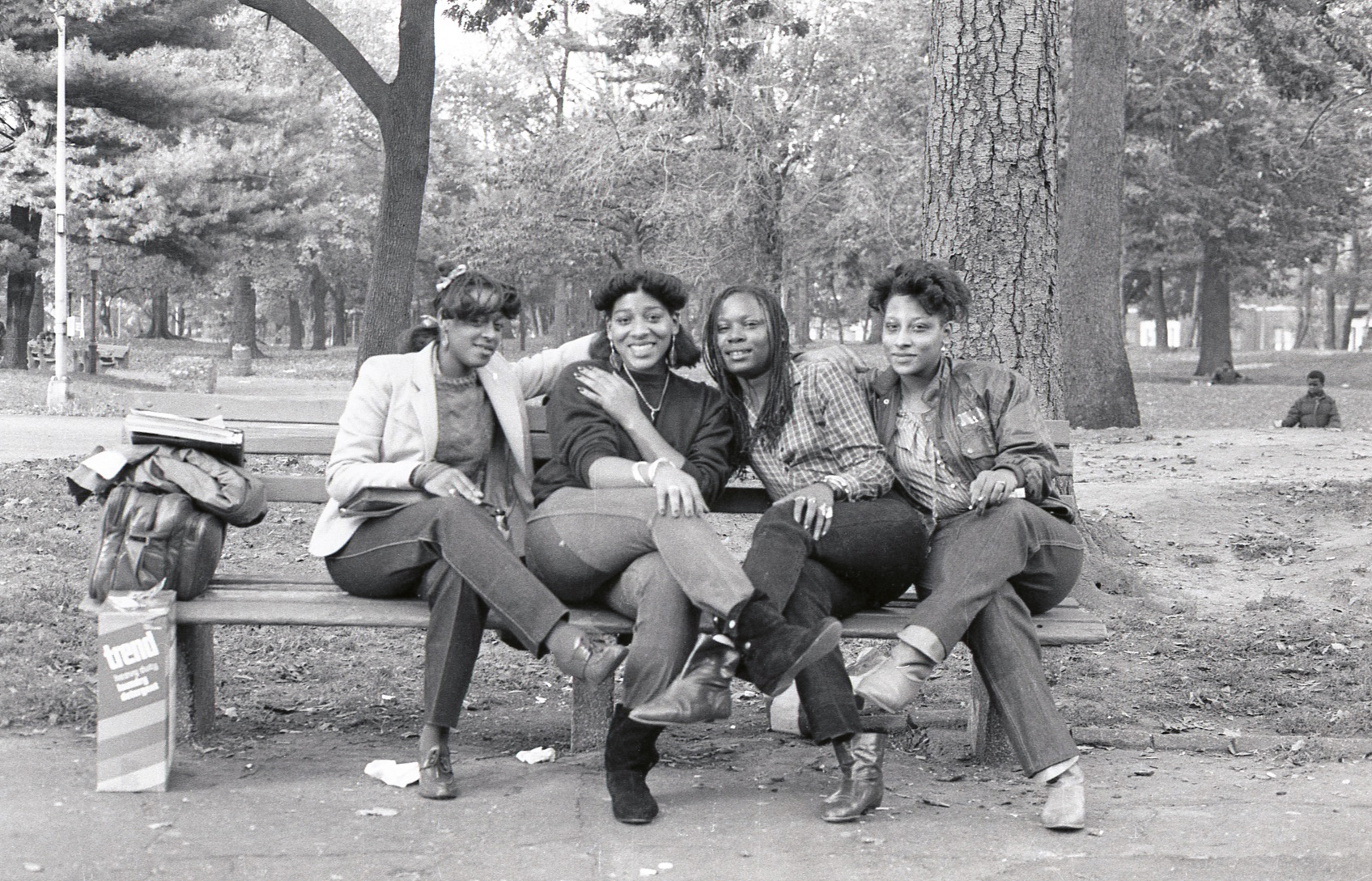 Jamel Shabazz’s photographs are a love letter to Prospect Park
Jamel Shabazz’s photographs are a love letter to Prospect ParkIn a new book, ‘Prospect Park: Photographs of a Brooklyn Oasis, 1980 to 2025’, Jamel Shabazz discovers a warmer side of human nature
-
 The Hammer Museum in Los Angeles launches the seventh iteration of its highly anticipated artist biennial
The Hammer Museum in Los Angeles launches the seventh iteration of its highly anticipated artist biennialOne of the gallery's flagship exhibitions, Made in LA showcases the breadth and depth of the city's contemporary art scene
-
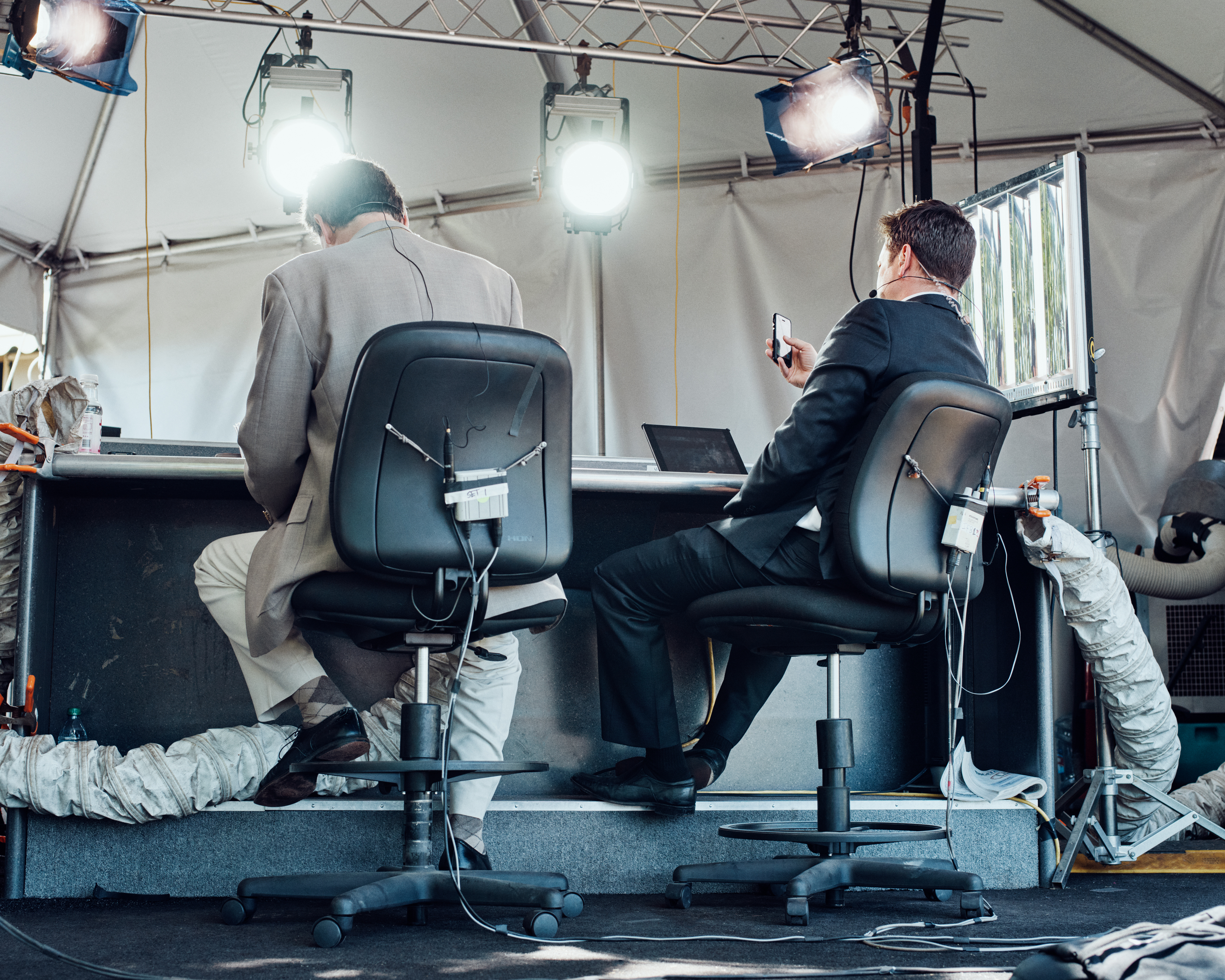 Thomas Prior’s photography captures the uncanny fragility of American life
Thomas Prior’s photography captures the uncanny fragility of American lifeA new book unites two decades of the photographer’s piercing, uneasy work
-
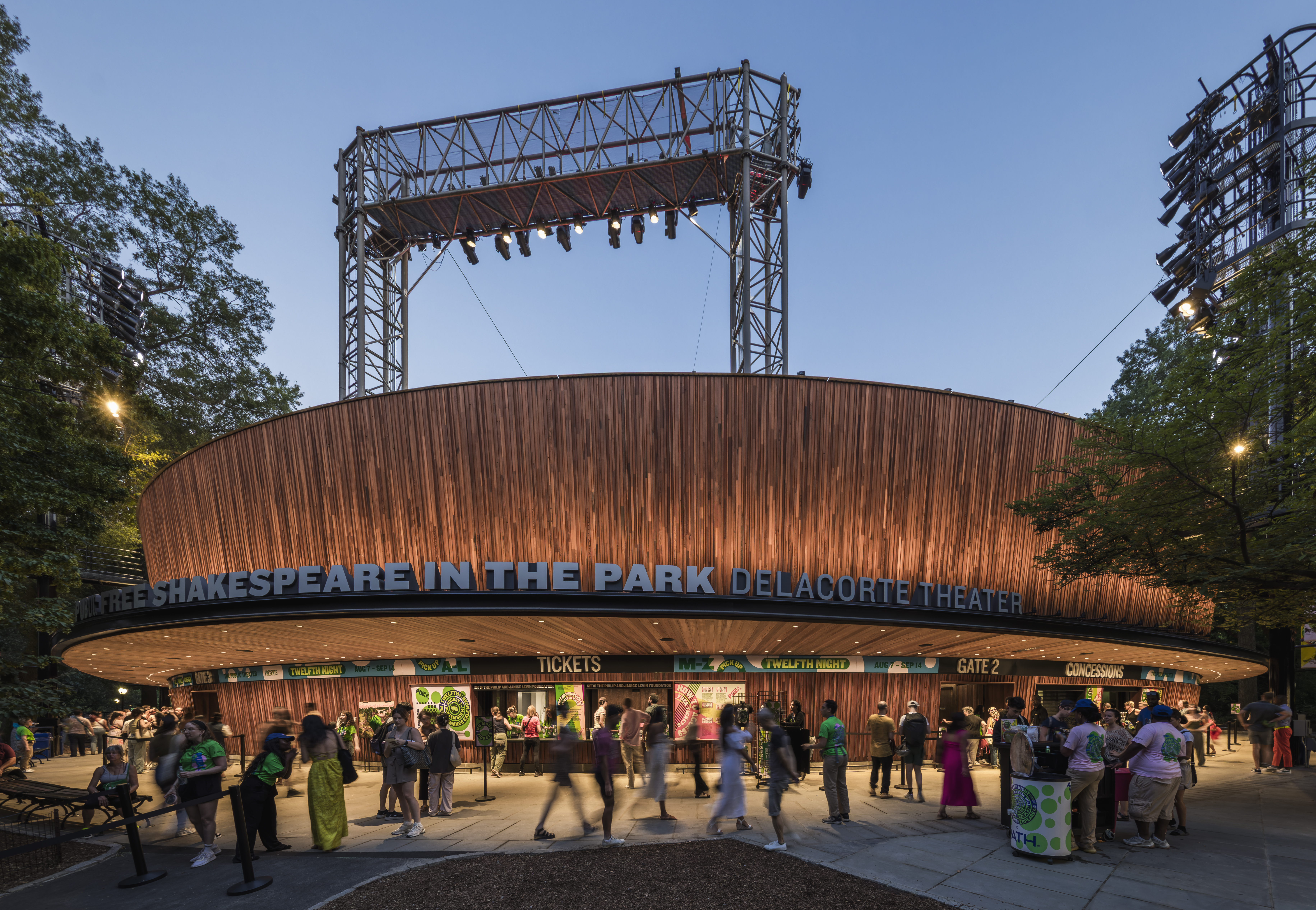 Central Park’s revitalised Delacorte Theater gears up for a new future
Central Park’s revitalised Delacorte Theater gears up for a new futureEnnead Architects helmed an ambitious renovation process that has given the New York City cultural landmark a vibrant and more accessible future
-
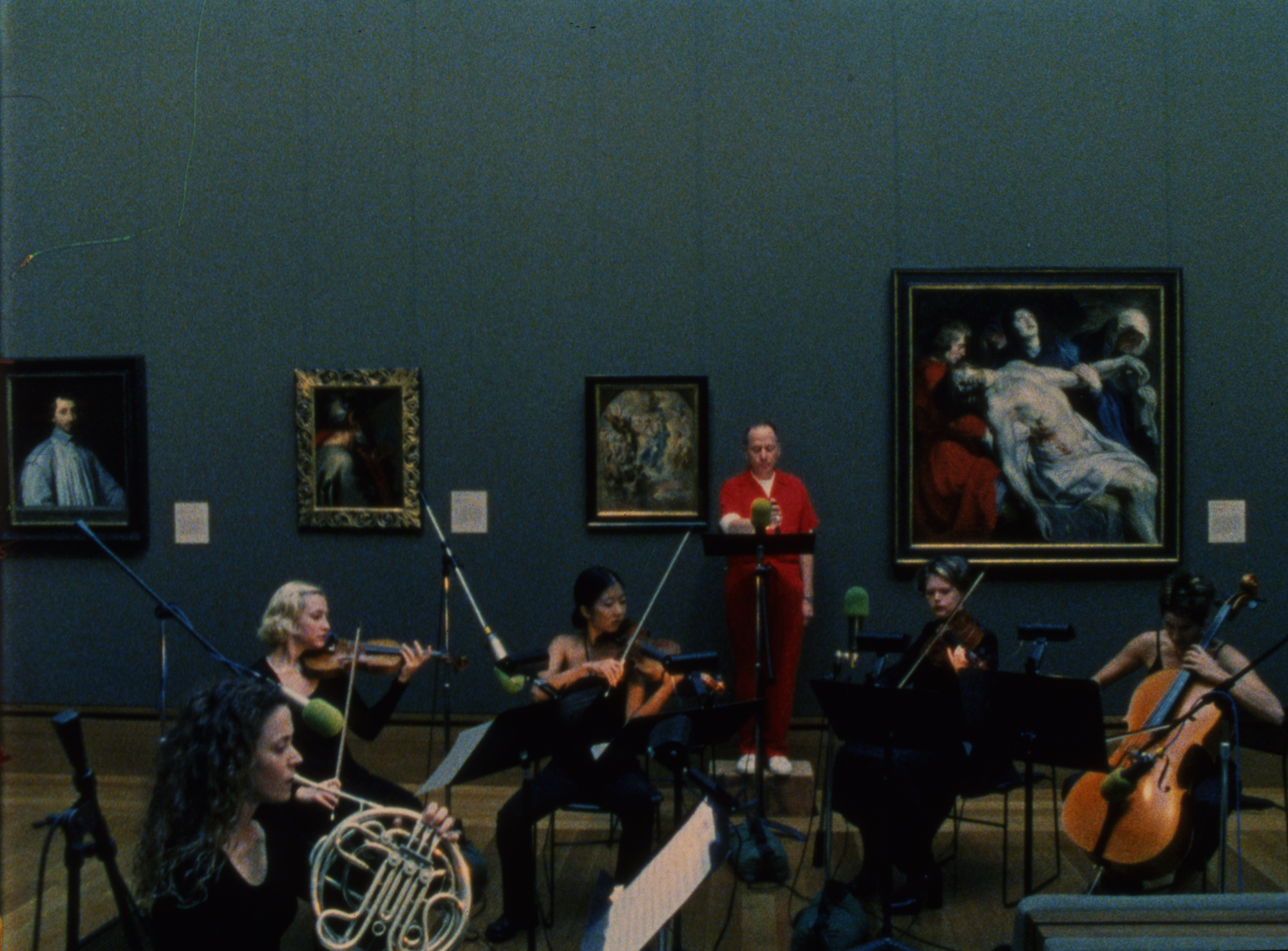 Stephen Prina borrows from pop, classical and modern music: now MoMA pays tribute to his performance work
Stephen Prina borrows from pop, classical and modern music: now MoMA pays tribute to his performance work‘Stephen Prina: A Lick and a Promise’ recalls the artist, musician, and composer’s performances, and is presented throughout MoMA. Prina tells us more
-
 Curtains up, Kid Harpoon rethinks the sound of Broadway production ‘Art’
Curtains up, Kid Harpoon rethinks the sound of Broadway production ‘Art’He’s crafted hits with Harry Styles and Miley Cyrus; now songwriter and producer Kid Harpoon (aka Tom Hull) tells us about composing the music for the new, all-star Broadway revival of Yasmina Reza’s play ‘Art’